
The British Commonwealth Air Training Plan (BCATP), often referred to as simply "The Plan", was a large-scale multinational military aircrew training program created by the United Kingdom, Canada, Australia and New Zealand during the Second World War. The BCATP remains one of the single largest aviation training programs in history and was responsible for training nearly half the pilots, navigators, bomb aimers, air gunners, wireless operators and flight engineers who served with the Royal Air Force (RAF), Royal Navy Fleet Air Arm (FAA), Royal Australian Air Force (RAAF), Royal Canadian Air Force (RCAF) and Royal New Zealand Air Force (RNZAF) during the war.

Royal Air Force Halton, or more simply RAF Halton, is one of the largest Royal Air Force stations in the United Kingdom. It is located near the village of Halton near Wendover, Buckinghamshire. The site has been in use since the First World War but is due to close by December 2027.
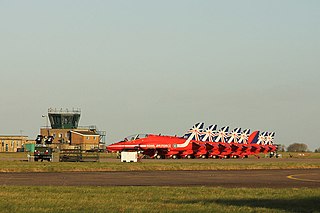
Royal Air Force Scampton or RAF Scampton is a former Royal Air Force station located adjacent to the A15 road near to the village of Scampton, Lincolnshire, and 6 miles (9.7 km) north-west of the city of Lincoln, England.

The Women's Auxiliary Air Force (WAAF), whose members were referred to as WAAFs, was the female auxiliary of the British Royal Air Force during World War II. Established in 1939, WAAF numbers exceeded 181,000 at its peak strength in 1943, with over 2,000 women enlisting per week.

RAF Andover is a former Royal Flying Corps and Royal Air Force station in England, 2 miles (3.2 km) west of Andover, Hampshire. As well as RFC and RAF units, units of the Aviation Section, U.S. Signal Corps, Royal Canadian Air Force, United States Army Air Forces, and the Air Transport Auxiliary were also stationed at the airfield.
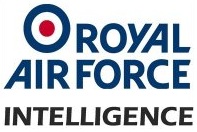
Intelligence services in the Royal Air Force are delivered by Officers of the Royal Air Force Intelligence Branch and Airmen from the Intelligence Analyst Trade and Intelligence Analyst (Voice) Trade. The specialisation has around 1,200 personnel of all ranks posted to operational air stations, HQs and other establishments of the British Armed Forces, both in the United Kingdom and overseas.
The Royal Air Force Volunteer Reserve (RAFVR) was established in 1936 to support the preparedness of the U.K. Royal Air Force in the event of another war. The Air Ministry intended it to form a supplement to the Royal Auxiliary Air Force (RAuxAF), the active reserve for the RAF, by providing an additional non-active reserve. However during the Second World War the high demand for aircrew absorbed all available RAuxAF personnel and led the RAFVR to quickly become the main pathway of aircrew entry into the RAF. It was initially composed of civilians recruited from neighbourhood reserve flying schools, run by civilian contractors with largely RAF-trained flying instructors as well as other instructors in related air war functions, such as observers and wireless operators.

Royal Air Force Driffield or RAF Driffield is a former Royal Air Force station in the East Riding of Yorkshire, in England. It lies about 2 miles (3 km) south-west of Driffield and 11 miles (18 km) north-west of Beverley. It is now operated by the Defence Infrastructure Organisation, as the Driffield Training Area.
No. 665 "Air Observation Post" Squadron, RCAF was formed in England during the Second World War. It was manned principally by Royal Canadian Artillery (RCA) and Royal Canadian Air Force (RCAF) personnel, with select British artillery pilots briefly seconded to assist in squadron formation. Numbers 651 to 663 Squadrons of the RAF were air observation post units working closely with Army units in artillery spotting and liaison. A further three of these squadrons – Nos. 664, 665 and 666 – were RCAF AOP squadrons manned by Canadian and British personnel.
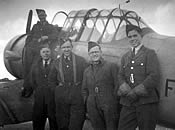
Royal Air Force Condover or more simply RAF Condover is a former Royal Air Force Flying Training Command airfield and air navigation training establishment between August 1942 and June 1945, unusually for both fighter and bomber crews at different times. Located on the southern outskirts of Condover village in Shropshire, 4.9 miles (7.9 km) south of the county town Shrewsbury.
Stanmore Country Park is a 100-acre (40 ha) country park in Stanmore, Shropshire, 1.2 miles (2 km) east of Bridgnorth. Created in 1994 on the former site of RAF Bridgnorth, the park is run by the Shropshire County Council and contains an RAF memorial to those killed who were stationed at the military camp.

Royal Air Force Cosford or RAF Cosford is a Royal Air Force station in Cosford, Shropshire, England just to the northwest of Wolverhampton and next to Albrighton.
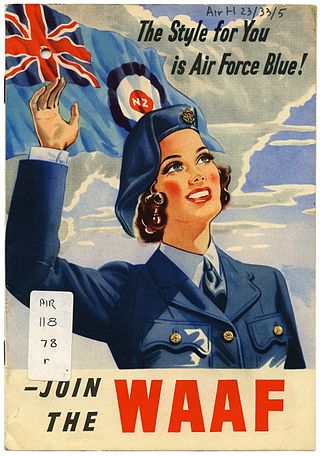
The Women's Auxiliary Air Force was the female auxiliary of the Royal New Zealand Air Force during the Second World War. Established in 1941, it began with an initial draft of 200 women, reaching a peak strength of about 3,800, with a total of about 4,750 women passing through its ranks, of who more than 100 achieved commissioned officer rank.

Royal Air Force Wheaton Aston, or more simply RAF Wheaton Aston, was a Royal Air Force station located just outside of the village of Wheaton Aston in Staffordshire, England. The base was actually in the hamlet of Little Onn which is 1.2 miles (2 km) north west of Wheaton Aston. The base was known locally as Little Onn or RAF Little Onn, but the policy of naming Royal Air Force stations was down to which parish the Station Headquarters was in.
Royal Air Force Harrogate or RAF Harrogate, sometimes known as Ministry of Defence (MoD) Harrogate, was the name for two distinct Royal Air Force establishments within the town of Harrogate, North Yorkshire, England. The main site was at St George's in the south-west of the town and was home to a medical training establishment (MTE), supply branch and Women's Auxiliary Air Force (WAAF) training centre. The site was demolished in 1994. The term RAF Harrogate was also applied to the requisition of several hotels in Harrogate town centre which acted as a No. 7 Personnel Reception Centre during World War II. This should not be confused with RAF Menwith Hill, a current RAF base near Harrogate.

Royal Air Force Bridlington, or more simply RAF Bridlington, was a Royal Air Force station located in Bridlington, East Riding of Yorkshire, England, between 1929 and 1978. Several units operated at Bridlington, Air Gunnery Schools, Initial Training Wings, and an Air Sea Rescue launch unit, but the longest occupier, was No. 1104 Marine Craft Unit (MCU). The station consisted of various buildings across the town that were requisitioned for RAF use before and during the Second World War. Outside of this time, the RAF presence was mostly in the harbour area and as it was such a small unit, No. 1104 MCU was looked after by other RAF Stations nearby.
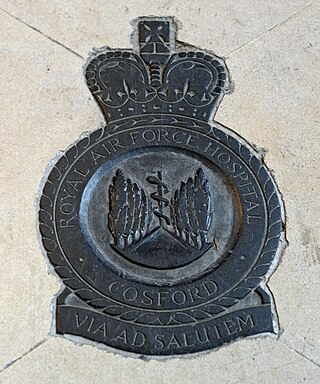
RAF Hospital Cosford was a Royal Air Force staffed military hospital at RAF Cosford, Shropshire, England. The hospital opened in 1940, and was one of a handful of Second World War era RAF hospitals that were kept open post Second World War, remaining a military asset until 1977, although it also treated non-service patients. It was known for its personnel reception centre, which dealt with returning prisoners of war in 1945.
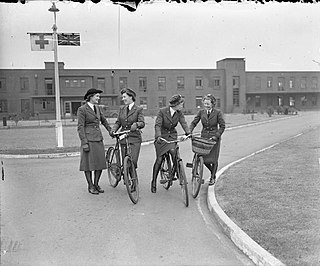
RAF Hospital Ely, was a Royal Air Force staffed military hospital in Ely, Cambridgeshire, England. The hospital opened in 1940, and was one of a handful of Second World War era RAF hospitals that were kept open post Second World War, remaining a military asset until 1992, although it also treated non-service patients, usually those who lived locally. On closure, the hospital became a civilian hospital under the NHS. Although not located on an established RAF Base, RAFH Ely was located within 50 miles (80 km) of forty RAF bases in the Second World War.

RAF Hospital Northallerton, was a Second World War era military hospital, in Northallerton, Yorkshire, England. The Friarage Hospital now stands where the former hospital once stood.

The RAF Hospital Torquay, was a medical facility run by the Royal Air Force (RAF) in the Torquay suburb of Babbacombe, Devon, England, during the Second World War. The RAF requisitioned the Palace Hotel, and set about converting it into a hospital, which opened in 1939. The hospital was subjected to at least two bombing raids in October 1942 and January 1943. The first raid resulted in at least 21 deaths, with the function of the hospital ceasing immediately and all work being transferred to other RAF Hospitals. It was never used as a hospital again, and after the war, was returned to civilian use.


















